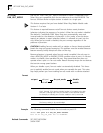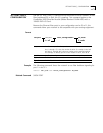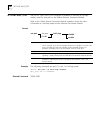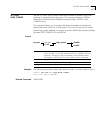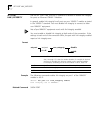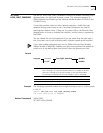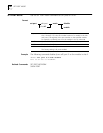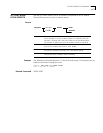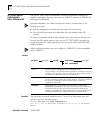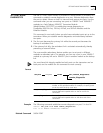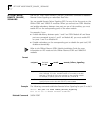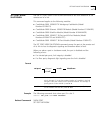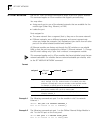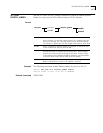
2-186
SET PORT MODE REDUNDANT/NON_REDUNDANT
SET PORT MODE
REDUNDANT/
NON_REDUNDANT
Use the SET PORT MODE REDUNDANT or NON_REDUNDANT command to
establish redundancy between two ports on 10BASE-T modules or 100BASE-TX
Workgroup FastModules.
Initiating redundancy on ONline modules can cause a network loop in the
unlikely event that:
■
Both the management module and the power fail concurrently
■
Ports of both the primary and redundant links are enabled using DIP
switches
To prevent a potential network loop, disable either the primary or backup port
through the DIP switch settings, then use the SET PORT MODE command to
enable that port. This looping problem does not occur with CoreBuilder 5000
media modules.
When setting redundancy, you can configure a 100BASE-TX to be compatible
with a 10BASE-T.
Format
Example
The following command establishes port 1 in slot 6 as the primary port and
port 3 in slot 6 as the backup port:
CB5000> set port 6.1 mode redundant 6.3
Port 06.01 set to REDUNDANT PRIMARY.Port 06.03 set to REDUNDANT
BACKUP.
Related Command
SHOW PORT
slot.port Selects a port for redundant or non-redundant mode.
slot (1 through 17) is the slot number location of a module in the hub
and port (1 through 40) is the port number on the specified module.
For example, to specify port 4 in slot 6, enter
6.4
non_redundant
Selects non_redundant mode. When you remove port redundancy,
you do not need to indicate the second slot.port. Using this command
on any port in redundant mode removes that port from the
redundancy relationship.
redundant
Selects redundant mode. When you enter the SET PORT MODE
REDUNDANT command for two ports, the first port in the command
line becomes the primary link, and the second port becomes the
backup or redundant link. If the primary link fails, the redundant link
is activated automatically, thereby preventing a network failure.
set port mode
slot.port
redundant
non_redundant
slot.port



